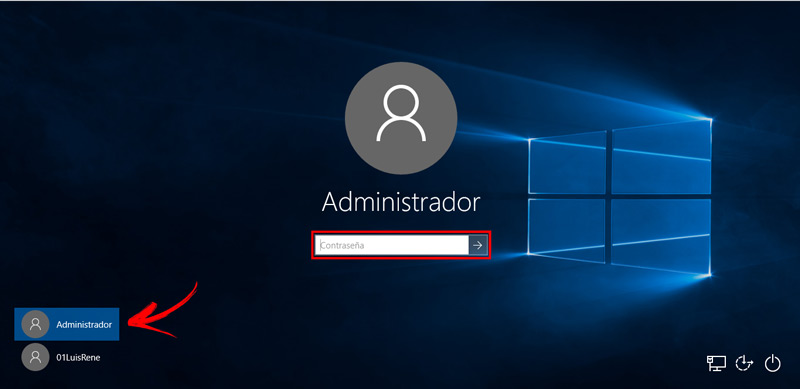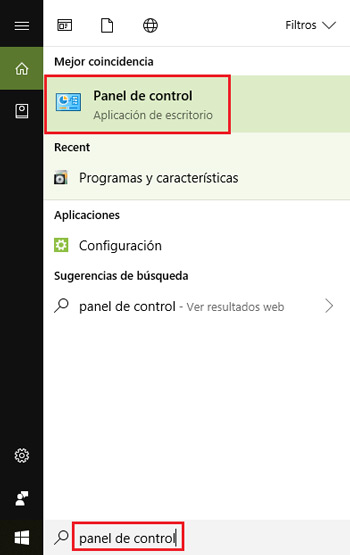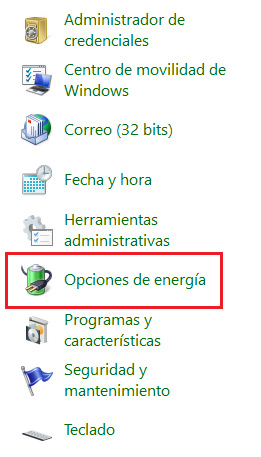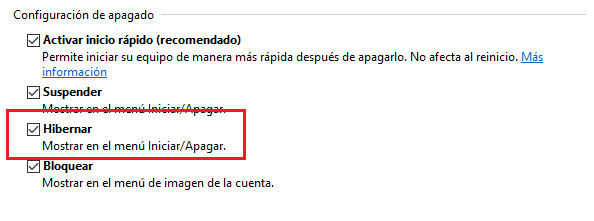
Index:
UPDATED ✅ Do you need to enable or disable the hibernation function of the W10? ⭐ ENTER HERE ⭐ And discover how to do it step by step with this guide
Hibernation is a function added to computers so that they enter a state similar to shutdown, especially in those that have a Windows operating system or are portable. It is an available option, which reduces energy consumption to zero and, in addition, saves all the information open at the moment to resume it once the equipment is reinitialized after going through this state.
This is mostly used when you intend to leave the computer idle for a few hours or for a short period of time. In offices and other work environments It is used to save energy in that period in which the computer is not usedbut with the certainty that all the data is stored on the hard drive so that, when you return, everything is as it was before.
For some reason, W10 hides this feature from users. If you do not know how to activate the hibernation function in windows 10, we are going to explain what you have to do step by step with this guide. We teach you all the guidelines that you have to follow and, in addition, we explain the advantages of using this hidden function of the system.
Steps to enable or disable hibernate mode on W10
Microsoft has hidden this feature in this version of the operating system. So that you can use it, we are going to give you below the steps to enable or disable hibernate mode on W10. It is a process that takes a few minutes and automatically activates this option.
1 – Login as “admin”
Turn on your computer as usual, but this time make sure that when you log into the operating system do it with an account that is an administrator. If you do not have permission to modify the system or make settings, Windows 10 will not let you do anything or, at most, will ask you to enter a password. Make sure you comply with this point before continuing to avoid problems.

2 – Enter the control panel
After the above, and once you are already on the desktop, go to the menu “Start” by clicking on the button with the Windows logo in the lower left corner. When the dropdown below opens, all you have to do is go to the search bar and type “Control Panel”. Observe the results that appear and click in the one whose name exactly matches what you have written. In this way, you will access said panel and you will be able to continue.

3 – Go to power settings
Now, you have in front of you several sections with different options. you have to go to the field “Hardware and sound” and click on it. Thus, you will be taken to a new window where all the options related to this field are.
Now, among all the alternatives that exist, you have to go to the section “Energy options” and click on it. You will be automatically directed to the power settings panel of the operating system.

4 – Activate or deactivate hibernation mode
Within the new section in which you find yourself, you have to go to the left column. In it, click on the option “Choose the behavior of the start/stop buttons” to enter to make the corresponding adjustments that we need.

You will now see that the window changes its content with various options related to PC switches. At the top, there is a section highlighted with the phrase “Change settings currently unavailable”. Click there to open yet another menu.

Below are a number of additional settings. Among them is “Hibernate”, which you can modify by checking or unchecking the box to its left. Adjust it as desired, and then click “Save Changes”.

If you have enabled sleep/hibernation, you will see that pressing the power off button through the “Start” this option will appear as one of the available ones.

Main advantages of enabling sleep or hibernation mode in Windows 10
Carrying out the entire process explained in the previous section to activate this mode must have some reason. Surely you are wondering what are the main advantages of putting to sleep and hibernation in W10and the truth is that there are several that are quite important.
Next, we will explain each and every one of the possible ones:
- First of all, you have the option to resort to this option in case you want to make the computer stop, but you don’t have to start from scratch the next time you go to it. During that time it will not sound or consume power, but it will be alert for you to turn it on again.
- If you intend to use the computer again in a short period of time, it is the fastest option and, in addition, the safest for the components of your computer. Leaving it on causes the parts to deteriorate more quickly and, in addition, generates extra electricity consumption.
- You don’t lose anything you’re doing when you stop your computer. At the same moment that the user presses this option so that the computer begins to hibernate, the system saves everything and leaves it open so that, when returning, everything is as it was before submerging it in that state.
- All open programs and documents to be saved are also preserved. In fact, if the power goes out or the laptop’s battery goes out, which would otherwise cause serious problems, everything is saved so that it will be available when it comes back. It is a fairly safe solution for cases like unexpected battery drain.
Despite these benefits, the hibernate option also has some disadvantages, such as a longer waiting time than the shutdown when the computer is requested to hibernate, or also a certain slowness when everything recovers again when “waking it up”. These are small details, but should also be taken into account.
Operating systems